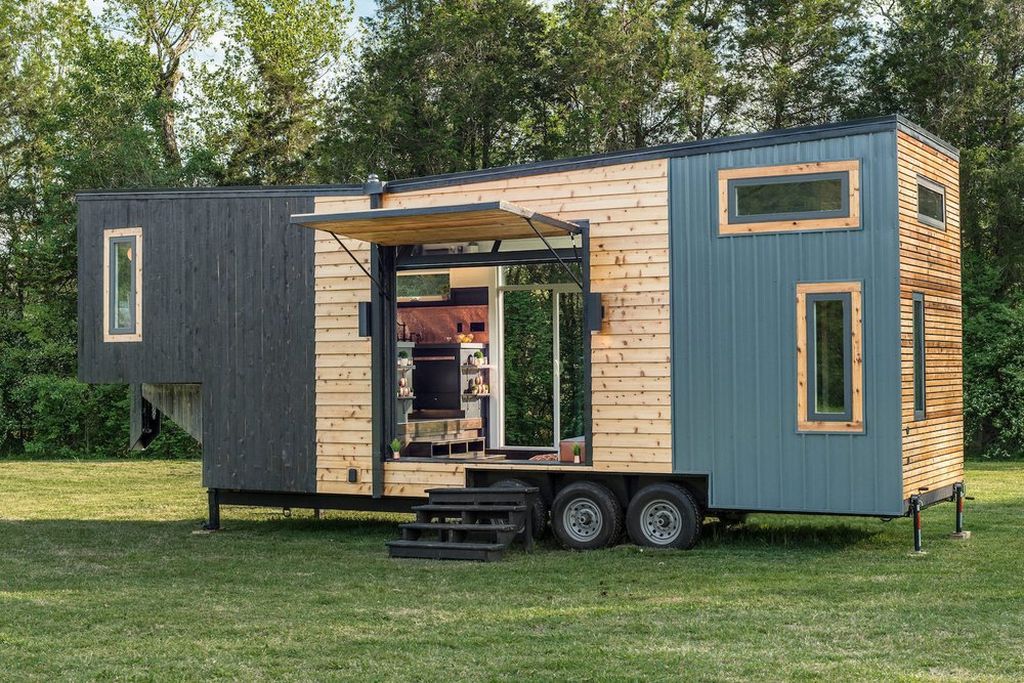The Ministry of Transport has recently proposed to add regulations on technical safety and environmental protection specifically for mobile homes.
The Ministry of Transport has sought opinions on the draft Circular on the issuance of the National Technical Regulations (QCVN) for technical safety and environmental protection of substitute cars replacing QCVN 09:2015 (draft). In which, the draft stipulates in detail the equipment on mobile homes.
Accordingly, the draft Standard stipulates the maximum number of people allowed to be carried (including the driver) of mobile homes is equal to the number of sleeping places arranged on the vehicle.
At the same time, the living compartment of the vehicle can only be used when the vehicle is parked. The minimum equipment requirements in the living area include: Sleeping area (can be converted from a seat); Dining table and chairs; Cooking apparatus; Sanitary equipment; Storage compartments.
All objects, accessories, and furniture must not have sharp edges and corners and must be arranged and installed in the vehicle in a way that ensures they do not move, are fixed in position, and minimize the risk of injury to all occupants when the vehicle is stationary or in motion.
The draft also has regulations on seats in the vehicle. Specifically, when the vehicle is in motion, the seats must be arranged towards the front of the vehicle (including the driver’s seat) and facing forward in the direction of the vehicle’s movement. These seats must be equipped with safety belts.
Regarding sleeping space, it must be arranged in the vehicle’s living compartment. The sleeping area can be located above the driver’s seating area or on an upper level, and can be fixed, sliding, or removable (bunk bed style).
The minimum width for each single bed is 480mm. The bed can be converted from a seat (to create a sleeping mat) if it meets the minimum size requirements after conversion.
For dining and living chairs, the draft regulation states that the installation position of the table must be fixed, removable, or foldable. When in motion, it must be firmly fastened with screws or attached/welded to the vehicle’s floor or side wall. The arrangement of the chairs must allow for proper use of the table. The chairs must be securely attached directly to the vehicle’s floor and/or side wall.
In addition to the vehicle’s doors, there must be at least one separate door for access to the living area, which can open or slide outside the vehicle on the side or rear.
The door area must not be blocked by any objects such as tables, chairs, or seating areas.
In terms of safety regarding electricity, fire prevention, the draft regulation stipulates that the electrical system serving the living compartment of mobile homes must be designed separately from the vehicle’s general electrical system, and must have safety devices such as fuses/automatic switches before connecting to the power generator and/or independent power storage system.
The electrical system serving the living compartment must be calculated and designed to meet the general standards of the grid electrical system so that it can be connected to an external power grid when the vehicle is parked. Solar panels can be installed to provide energy for the living area.
All recording devices or display devices (TV screens) and related equipment must be securely installed in positions: Not obstructing the driver’s view; Not obstructing the driver’s or passenger’s movements in the vehicle; Not increasing the risk of injury to people inside the vehicle; Not located in the driver’s line of sight, except for driver assistance devices.
For sanitation systems, the installation of sanitation equipment and bathrooms (if any) must be fixed or mobile. Fixed sanitation equipment must ensure waste and wastewater are collected in a container.
Meanwhile, the fresh water tank must be separate from the wastewater tank. All wastewater tanks must have vent holes to the outside. There must be shut-off valves, and the connection system from the tank must be easily accessible to the clean water supply and outside discharge points.
For cooking equipment, it can be installed inside or outside the vehicle depending on the vehicle’s design. Cooking equipment installed inside the vehicle must be securely attached with screw systems, welding, or adhesive to the vehicle’s floor and side walls.
The installation position must be well-ventilated, separated from other living spaces such as sleeping areas and the driver’s cabin, and have a ventilation system to the outside. The fresh water pump and sink must be located near the cooking equipment.
Compressed natural gas (CNG) and liquefied petroleum gas (LPG) must not be used as fuel for cooking equipment installed on the vehicle.
The draft regulation also stipulates that at least two fire extinguishers with a minimum capacity of 2kg each must be equipped. One extinguisher must be located near the driver’s seat, and the remaining extinguishers must be securely attached in the living area of the vehicle, in a visible and accessible position.
TT (Tuoitrethudo)
Toyota Vietnam joins hands for a Greener SEA Games
With the goal of promoting awareness about climate change and environmental pollution, as well as showcasing the beauty of Vietnam and its people to countries in Southeast Asia and the international community, Toyota Vietnam joins the implementation of activities within the Green SEA Games program, initiated by the Communication Resource and Environment Center of the Ministry of Natural Resources and Environment in collaboration with the General Department of Sports and Physical Training.
Honda Vietnam Organizes “Keeping the Green of Vietnam with Honda”
On December 16, 2023, Honda Vietnam (HVN) collaborated with the Vinh Phuc People’s Committee to organize the event “Together with Honda, preserving Vietnam’s green color”. This is one of HVN’s meaningful activities towards Carbon Neutrality by 2050, based on the shared goals of Honda Motor and the Vietnamese Government.






















































